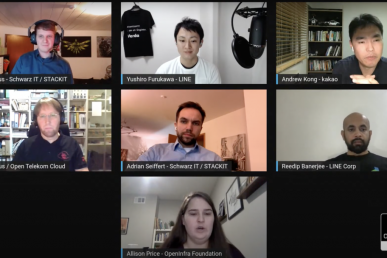Eleven years into the development and adoption of OpenStack, organizations with clouds of all sizes are continuing to grow their footprint and diversify the workloads they are running. In this series of case studies, we talked to different users around the world, learned about the scale and growth of their OpenStack cloud, and what kind of future growth they are expecting.
Today, Yushiro Furukawa, senior software engineer, and Reedip Banerjee, cloud DevOps engineer, at LINE, presented their OpenInfra use case and explained why their OpenStack deployment is growing so quickly.
What is the name of your organization?
LINE
What year did your organization launch its first OpenStack
2016
How has OpenStack transformed your organization?
OpenStack has changed service operation culture in the development teams. The culture change has accelerated and supported LINE’s service growth. OpenStack has introduced an abstraction layer, a.k.a API, between actual data center infrastructure and application developers. The abstraction layer has changed LINE’s service operation culture from “doing” operations to “developing” operations. The new culture has reduced lots of extra work and developers can focus on the service development now.
What workloads are you running on OpenStack?
LINE’s application and its service workload
What is the scale of your OpenStack environment?
5,000+ Hypervisors, 74K+ Virtual machine, 30,000+ Bare metal nodes
Why has your organization seen such significant growth over the last year?
LINE’s services and amount of end users are growing day by day and year by year. We’re supporting the company growth from the infrastructure layer.
What is next for your OpenStack deployment? Are you expecting similar growth of the upcoming years?
Yes, definitely. We will expand some availability zones and add a new region over the next few years in order to support LINE’s workload growth. This will make another significant our OpenStack cluster growth in the next few years.
- Inside Open Infrastructure: October 2024 - October 2, 2024
- Inside Open Infrastructure: June 2024 - June 18, 2024
- Inside Open Infrastructure: April 2024 - April 3, 2024

)










